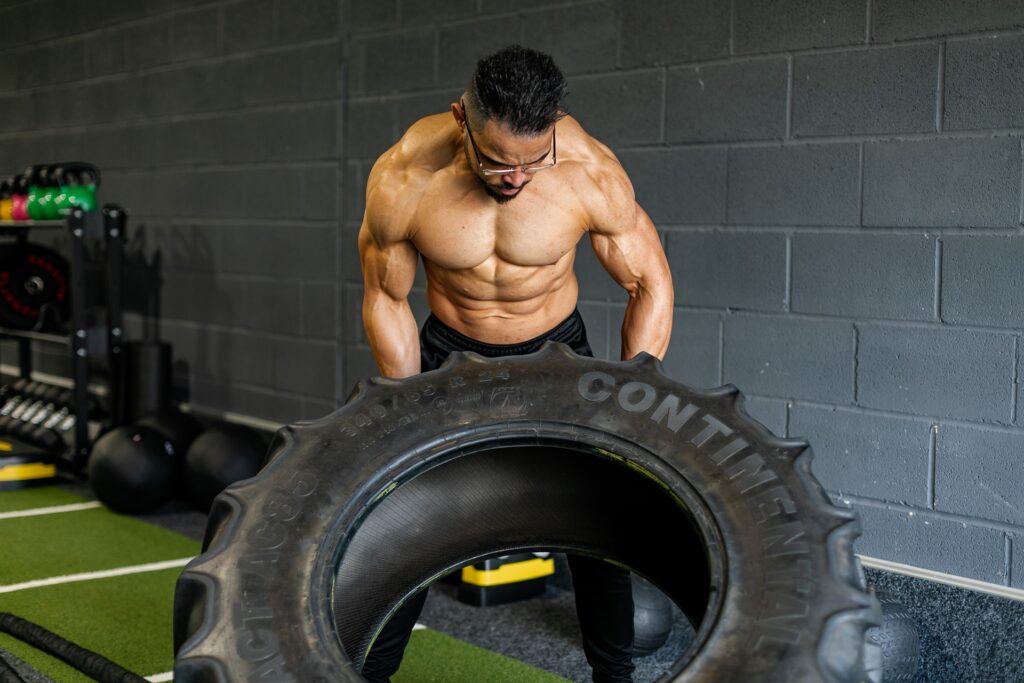Training frequency refers to how often you train a particular muscle group or movement pattern in a given microcycle (usually a week). It is an important factor to consider in any training program, as it can impact your progress, recovery, and overall results. However, determining the optimal training frequency for your goals and abilities can be complex and requires careful consideration of a number of factors. In this article, we’ll explore everything you need to know about training frequency, including how to determine the right frequency for you, common training frequencies for different goals and abilities, and tips for maximizing your results. Whether you’re a beginner lifter or an experienced coach, understanding training frequency is key to achieving your fitness goals.
Table of Contents
- 1 What is training frequency in detail?
- 2 Optimal training frequency
- 3 Training aim
- 4 Training frequency for muscle growth
- 5 Training frequency for strength
- 6 Training intensity and weight used
- 7 Athlete’s weight and level of development
- 8 Is the athlete fast or slow-twitch dominant?
- 9 Total strain
- 10 Summary
What is training frequency in detail?
Training frequencyis one of the key variables that can be manipulated in a training program to promote muscle growth, strength gains, and performance improvements.
When designing a training program, it’s important to consider how frequently you should train each muscle group or movement pattern based on your goals and abilities. Generally, the frequency of training will depend on factors such as your training experience, recovery ability, and the volume and intensity of your workouts.
In general, higher training frequencies are associated with greater muscle growth and strength gains, as they provide more opportunities to stimulate the muscles and promote recovery. However, training too frequently can also lead to overtraining and injury, so it’s important to find the right balance for your body and goals.
Ultimately, the optimal training frequency for you will depend on a number of individual factors, and may need to be adjusted over time as you progress in your training. By understanding the basics of training frequency and how it affects your body, you can design a training program that helps you achieve your goals and maximize your results.
Optimal training frequency
Determining optimal training frequency for muscle growth is a simple but not easy task. For each athlete, such frequency will be individual as everybody can react differently to training stimuli, however, there are a couple of cues that I follow when creating programmes for my athletes and I reckon that implementing them can be beneficial also for you.
Training frequency should depend on recovery, however, the recovery itself can be related to two organ systems, the central nervous system and the muscle organ system. Depending on how you structure your athletes’ workouts, these systems will recover at a different pace. You have to understand that in some cases your muscles might recover while your CNS might not and vice versa. Correctly determining the pace of their recovery can indeed be very helpful but it is not a simple task to do.
The factors that you should consider when designing a training block are training age, athlete’s training status, athlete’s accustomization to the given set of exercises, is the athlete fast or slow-twitch dominant?, neuromuscular efficiency, the nature of the workout (strength-focused, power-focused, speed-focused), level of athlete’s development, athlete’s weight, weight and the intensity used (as they are different parameters), the volume, is the athlete on a caloric surplus or deficit and probably many more that I can’t think of right now. This guide, however, intends to focus on a set of practical applications that can be easily remembered and utilised to improve sports performance.
Training aim
Are you training for strength or power gains, or maybe to induce muscular hypertrophy? Or are you just performing technical work? It makes a huge difference as if you put too much strain on the CNS, it might recover for much longer than muscles. If you, for instance, operate in a 6-8 rep range during hypertrophy training, your athlete could be perfectly fine for a pump 12-20 workout tomorrow and such a workout can increase recovery assuming that it’s performed relatively light.
Training frequency for muscle growth
Training frequency for muscle growth is different from strength training. If your main goal is to optimise training frequency for hypertrophy, you would be better off training more often. Now, I am not going to cite research as first of all, you can easily search for research yourself and second of all, most of the research is usually conducted on beginners while the truth is that they react completely different to advanced or even intermediate athletes. When it comes to training for muscle growth, I would suggest you train each body part twice a week and you can do so by dividing your workout (not by adding volume) into two parts. The first workout would consist of 5-8 reps, compound movement, less volume and higher intensity and the second workout would look exactly the opposite. More than 8 repetitions, isolation exercises (preferably in the full range of motion), medium intensity and pump work. By doing so, the first workout can help you build a solid strength base and the second workout can help you stretch the muscles, allow the muscle fibres to realign, deliver nutrients to the muscle tissue and most importantly, stimulate the muscle protein synthesis for the second time during the week. There are also methods where you pick 4-5 exercises in different intensity zones and train a lagging muscle group 4-5 a week but this is a more complex method and requires more explanation. Anyway, use these training tips to get big and build muscle fast.
Training frequency for strength
Training frequency for strength also ranges a lot but just to remind you, workout systems where you train a lift 4 times a week or more usually rely on high technical efficiency so perhaps 2 or 3 workouts can be fairly intense in terms of weight used (depending on the athlete’s level) but the rest will serve only for improving technique. If you want to determine training frequency for strength, your main goal is to deliver a strength-building stimulus, recover from it and repeat it while applying the progressive overload principles. As long as you can provide a large enough stimulus to grow, recover from it and repeat it, you will be doing fine. You will have to tune in with your body and you must remember this frequency will change as you get stronger. To give you a brief example, a 100kg bench presser can bench 3 times a week and a 200kg bench presser would be better off training only once a week. Personally, I used to train each lift 2-4 times a week but as I kept getting stronger, I had to reduce my training frequency and ended up training each lift once a week with only one lower body day a week. This means I would squat once every 2 weeks and deadlift once every 2 weeks. Similar approaches have been presented by lifters like Scot Mendelson, Stan Efferding or Eric Lilliebridge. Another important fact to mention is that my mentor, Josh Bryant, often spreads each microcycle to 10 days for stronger athletes or alternates heavy deadlift and heavy squat week. In this case, the athlete squats heavy and deadlifts light one week the following week, they deadlift heavy and squat light.
Training intensity and weight used
The higher the intensity, the longer the athlete will recover. The same goes for weight used regardless of training intensity. For example, if your athlete’s 1rm is 350kg and you instruct them to work at 85% of his 1rm, they will take much longer to recover than the athlete that lifts 200kg and operates at the same intensity, with the same total volume.
Athlete’s weight and level of development
The more the athlete weighs, the harder it will be for him to recover. The same goes for advanced athletes, that is, athletes that reached further stages of development. A beginner will recover quicker than an advanced athlete as they can produce more force, power, speed, workout volume and they are more efficient at recruiting bigger motor units so next time you program a workout for an athlete, consider if they’re really muscular or rather small and if they are advanced, intermediate or novice.
Is the athlete fast or slow-twitch dominant?
You do not have to genetically test your athlete to determine that. It can be guessed fairly easy, by simply observing athletes and watching if:
- Does the athlete have more strength endurance or rather more power?
- The athlete can perform less or more than 5 reps with his 85% of 1rm in main lifts?
- The athlete reacts better to high-intensity or high-volume training?
- The athlete does better with fast, low-rep movements or rather repeatable, slow motions?
These factors (and a couple more) can help you guess if your athlete is slow or fast-twitch dominant which will aid you in determining optimal training frequency.
Total strain
Total strain can be calculated by measuring the effort put into each rep or set and multiplying it by the number of times performed where in this case it would be either total reps or total sets. It’s multiplying the number of times you got tired during a workout by the rate of perceived exertion. Remember though, that there is a difference in putting strain on your myofascial system and central nervous system and it needs to be distinguished when designing a workout, especially if you plan to program training one muscle group or movement multiple times a week.
Summary
In a nutshell, you will have to pay attention to multiple factors and watch how they influence your athlete’s recovery rate. The goal is to realise from which workouts your athlete recovers fairly quickly and from which workouts he recovers significantly longer. The whole process of determining the workout frequency will depend on if the athlete is ready for another session or not.
P.S. If you want to learn how to get big and strong naturally fast, read this article.





2 Comments. Leave new
Sounds good.
Thank you for your opinion, appreciate it